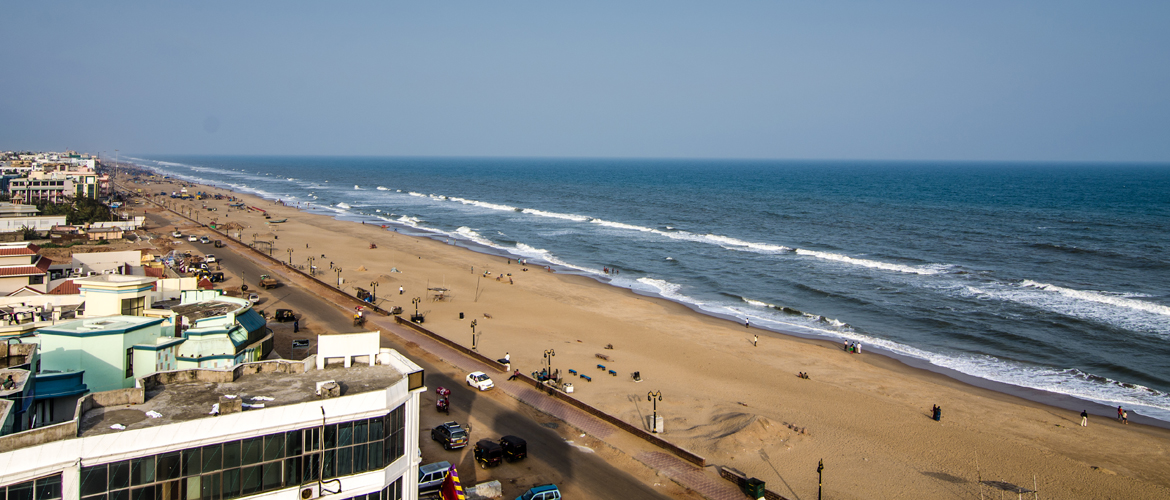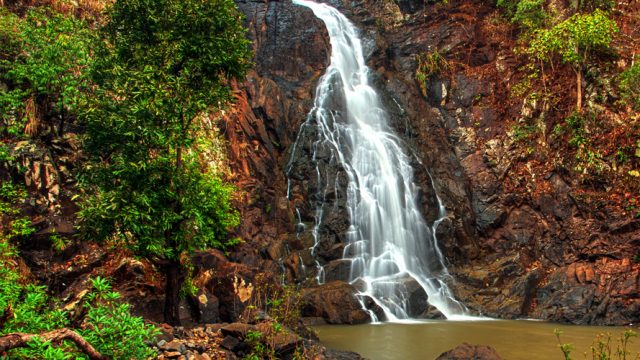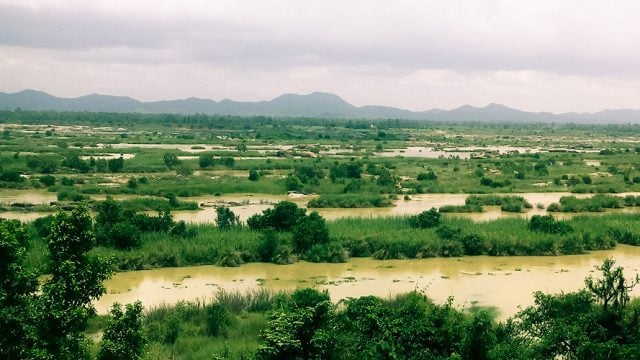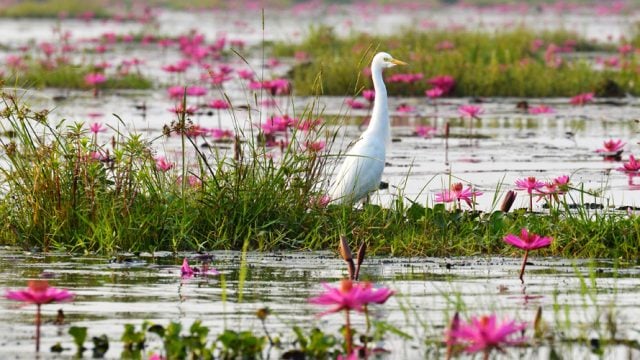Roughly stretching from Talasari to Gopalpur, the beaches of Odisha have something suitable for everyone – families,

Located near the Odisha-Bengal border, Talasari is a favourite day-long excursion by travellers visiting Digha (eight km by road; West Bengal). The scenic beach lies forlorn for the greater part of the year. Take a picnic hamper and enjoy an outing with the family. But do check with the locals about the time of the high tide, when the water comes well inside.
About 16km by road from Balasore, Chandipur-on-Sea is better known as the missile testing range under the Indian Defence Ministry. But it is also home to a quaint beach, mostly populated by weekending crowds. But do note that during low tide, the sea recedes by as much as five kms. And as high tide approaches, the sea begins to move inwards, and you can literally see the water crawl up the beach. The inter-tidal zone offers opportunities to study common marine fauna, including horse-shoe crabs.

Although the Gahirmatha beach, near the Bhitarkanika National Park, remains forlorn for the greater part of the year, it is visited by naturalists and researchers between November and February, when Olive Ridley Turtles arrive here in large numbers to mate, nest and lay eggs. The hatchlings return to their home in the sea, usually in January and February.

Puri, the most famous beach resort of Odisha, one arm of the state’s Golden Triangle, is about 60km from state capital Bhubaneswar. Home to Odisha’s guardian deity Lord Jagannath, it allows tourists to turn their pilgrimage into a beach holiday. The Swargadwar (the gateway to heaven) area, located right in the middle of the long Beach Road and not far from the Jagannath Temple, bustles with activities. Hotels, restaurants, hawkers, handicraft and souvenir shops and a meandering crowd of visitors keep the area animated from dawn until late at night. So if you want to stay away from the crowd, look for hotels in the Chakratirtha area or along the New Marine Drive.
A usual traveller’s day at Puri begins at the crack of dawn, with a view of the sun rising from the sea. Take a stroll along the beach as the orange rays gild the deep blue water and watch the fishermen arrive with their boatloads of fresh catch. Soon the beach is dotted with enthusiastic bathers of all ages. Squeals of delight and fright rent the air as one blue wave after another pummel the bathers. In between, you can sip on green coconuts sold on the beach. The crowd on the beach thins out as meal time arrives and shifts to the dining halls and restaurants, which mostly serve Odiya, Bengali, north Indian and Indian Chinese dishes. Go for the fish, prawns and lobsters, or crabs, which are served fried or cooked in different gravies. By late afternoon, once again, the beach begins to attract people. One of the most crowded corners is the jumble of hawkers selling souvenirs and snacks. As night descends, the bathers beat a retreat. People enjoy the view of the waves crashing on the beach, the phosphorescence adding a glimmer to the crest, enjoy a snack or two on the beach until it is time for supper. The Puri beach is also a favourite with sand artists, and if you are lucky, you may catch much-awarded Sudarsan Pattanaik at work too.
Apart from paying a customary visit to the temple (only Hindus allowed; you have to leave behind all electronic items, including phones, and all leather accessories), you may go on a sightseeing spree; Puri is one arm of Odisha’s Golden Triangle. The other two being Bhubaneswar and Konark. A half day trip to Satpada Dolphin Sanctuary and the sea-mouth of Chilika or a day trip covering Bhubaneswar and Konark being the most popular options.
If you are interested in local crafts, a visit to Raghurajpur handicraft village can be most rewarding. You can watch artists at work and also buy directly. Many shops and emporiums in Puri sell textiles and handicrafts manufactured across the state.
The state government organises a Puri Beach festival in winter. Puri is also famous for the Jagannath Rathayatra (Chariot Festival), held during the monsoon, when the three idols ride their gigantic chariots and go on a holiday to their aunt’s house.
There are several lesser known beaches near Puri, which are great places to enjoy the tranquil seaside. Baliharachandi, about 27km from Puri, is a locally popular pilgrim centre. The beach located beyond the temple is tranquil and crowd-free.
Located off the Puri-Konark Marine Drive, casuarina-fringed Balighai beach is located near the mouth of the Nuanai River. About eight km from Puri and 30km from Konark, it is one of the quieter beaches.
About 90km from Puri, the Astaranga beach takes its name from the fantastic play of colours on the water during sunset.

The Chandrabhaga beach, close to the Konark Sun Temple, is a lonely stretch of beach. You can also go romancing the blue waves of the Bay of Bengal at Ramchandi beach, about seven km by road from Konark and also off the Puri-Konark marine drive. The place, which takes its name from the locally revered Goddess Ramachandi, is also the venue for surfing and other water sports events conducted by private entrepreneurs.
Gopalpur-on-Sea, the second most well-known sea beach of Odisha, next to Puri, probably was one of the earliest destinations to discover the benefits of home stays. The balmy climate and the serene sea shore had attracted many of the retired Anglo-Indian employees of the Bengal-Nagpur Railway to settle here. In 1947, Rai Bahadur MS Oberoi bought the Palm Beach hotel from an Italian lady to start his third hotel after those in Shimla and Kolkata. As the hotel began to attract members of the elitist society of Calcutta (now Kolkata) who wanted to shun crowded Puri, many of the elderly residents too found it profitable to rent out their spare rooms to the discerning visitors. The home-cooked sumptuous meals offered by them were also a big attraction.
Today Gopalpur’s character has undergone a sea change, with the crumbling Anglo-Indian homes being taken over by hotel developers. Even the Oberoi Palm Beach Hotel changed hands in 2011. But Gopalpur-on-Sea still remains a good place to enjoy the surf.
Approached through the town of Brahmapur (Berhampore), about 16km away by road, the sprawling beach, washed by the blue waters of the Bay of Bengal, is good for long walks, frolicking in the waves, and watching the unfolding of local life – trawlers coming to shore, fish being auctioned, boats and fishing nets being repaired, etc. There is no compulsion to go sightseeing. If you insist, there is a lighthouse, the backwater and a Krishna temple from which the town takes its name.
Recently, a few beaches have opened up near Gopalpur-on-Sea. The Pati-Sonapur beach (about 35km away by road) is near the state’s border with Andhra Pradesh. The river Bahuda joins the sea here. The casuarina guarded tranquil Aryapalli beach is about 30km from Gopalpur.
Information: The best time to visit the beaches of Odisha is winter, when the weather is mild. However, it is also the time when Puri and other popular beaches see a rise in the number of visitors. So booking accommodation in advance is advisable. Odisha Tourism Development Corporation runs budget to mid-budget lodges at the major beach towns. Mayfair Heritage, Pramod Resorts, Sterling Puri, Blue Lily Beach Resort, are some of the luxury addresses in Puri. Lying midway between Konark and Puri on Marine Drive road, Toshali Sands is located far from the din. In Gopalpur-on-Sea, you can check out Swosti Gopalpur Palm Resort or Mayfair Palm Beach Resort.
beaches in India
beach holidays
travel





